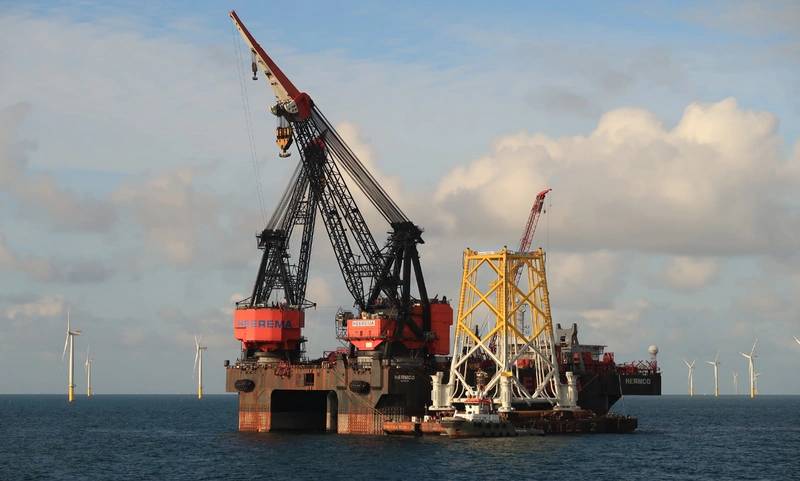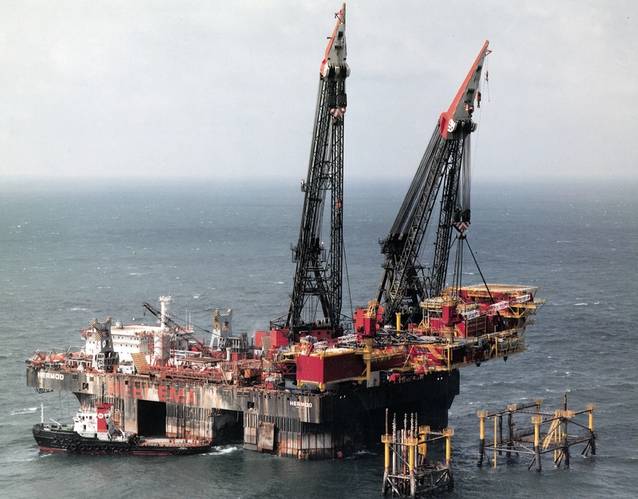Heerema Marine Contractors said its semi-submersible crane vessel Hermod will retire at the end of this year after nearly 40 years of operational performance.
Designed and constructed in the 1970s, Hermod and sister vessel Balder were the first semi-submersible crane vessels of their kind in the offshore construction industry. The semi-submersible concept was developed with the aim to extend the operability in the harsh North Sea environment and furthermore to deliver superior lifting capacity. This allowed Heerema Marine Contractors to work faster and during more months of the year than the conventional mono-hull crane vessels of the time.
After delivery by the Japanese Mitsui yard in 1978, Hermod’s first job was the installation of the Piper A platform on the U.K. Continental Shelf. She executed her first project outside the North Sea in Brazil in the mid-eighties, followed by projects in the Gulf of Mexico, South East Asia and Africa. Throughout her career, Hermod worked in more than 25 countries and was involved in several ‘first-of’ installation projects, such as:
- Installation of the first North Sea Tension Leg Platform (Hutton) jointly with Balder in 1984.
- Installation of the first deepwater foundation piles of the first TLP in the Gulf of Mexico (Auger) in 870 meters of water in 1992.
- Installation of the Tombua Landana compliant tower foundation in Angola in 2008 comprising the world's largest single piece foundation piles (2.7m diameter, 190m long and weighing 850mT each).
- Removal of the first large platform in the U.K.: North West Hutton in 2008/09.
- The heaviest lift performed by Hermod was the Peregrino topside in Brazil in 2010 with a dry weight of 6,287 mT.
Heerema Marine Contractors said Hermod’s demolition will take place at Chinese demolition yard Zhoushan Changhong International Ship Recycling Company and will be performed in a safe and responsible way, in accordance with the Hong Kong International Convention for the Safe and Environmentally Sound Recycling of Ships and in line with the European Union Ship Recycling Regulation. About 98 percent of the vessel materials will be recycled and reused. Based on above evaluation, the Dutch government has granted the export license for Hermod. Hermod will be transported to its final destination on the heavy transport vessel Dockwise Vanguard of Boskalis.
We wish to bring a thankful salute to our Hermod and all of our colleagues involved in working on and with her, presently and in the past, being grateful for an exceptional contribution to the offshore construction industry in general and our company in particular.
While Hermod will be retiring from service, HMC is at the same time constructing the world’s largest semi-submersible crane vessel Sleipnir in Singapore. Sleipnir has a 2 x 10,000 mT lifting capacity and is due to come into service in 2019. In order to improve the environmental footprint of our operations, Sleipnir will be outfitted with a dual fuel propulsion system, whereby in LNG mode, harmful emissions will be substantially reduced.
















